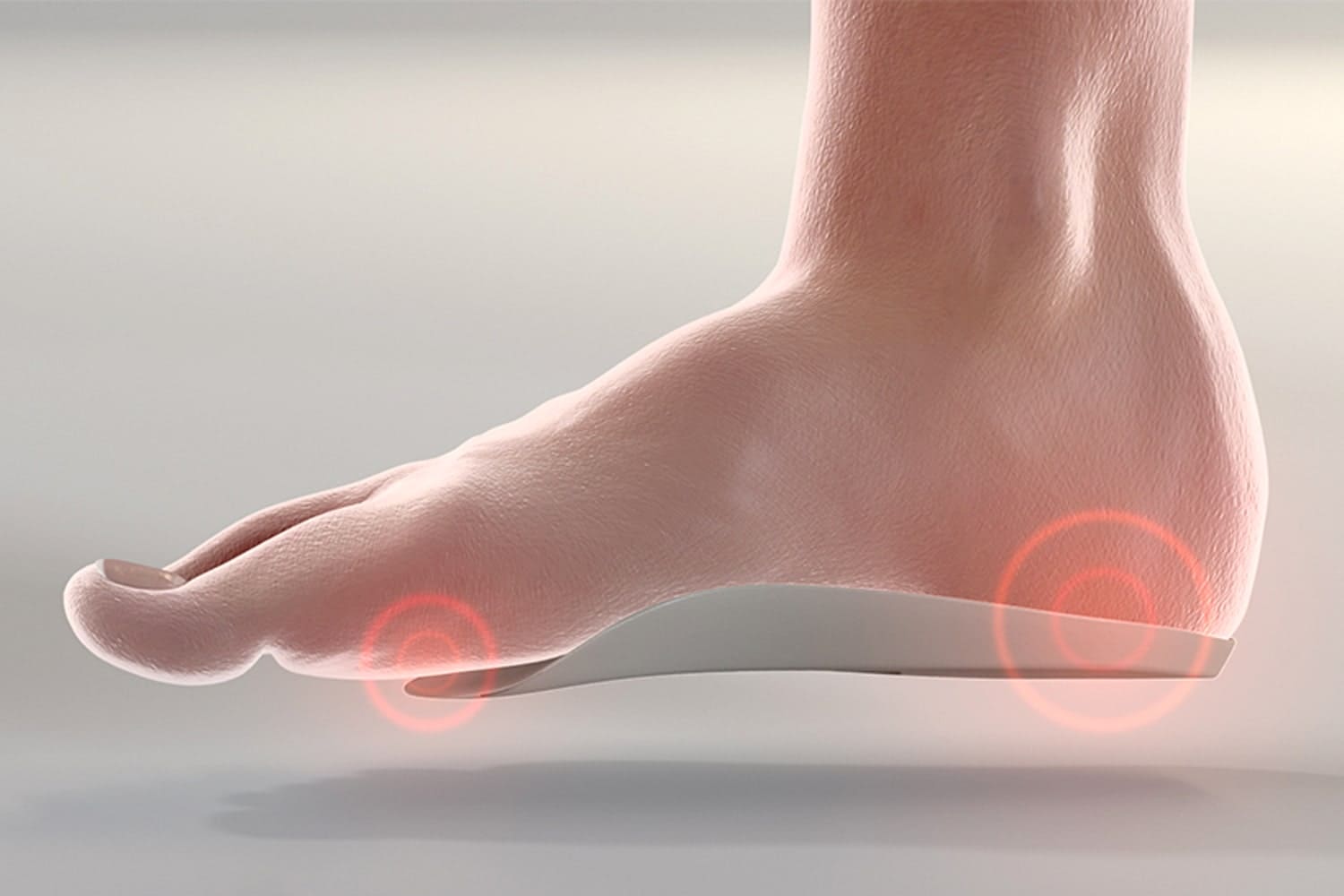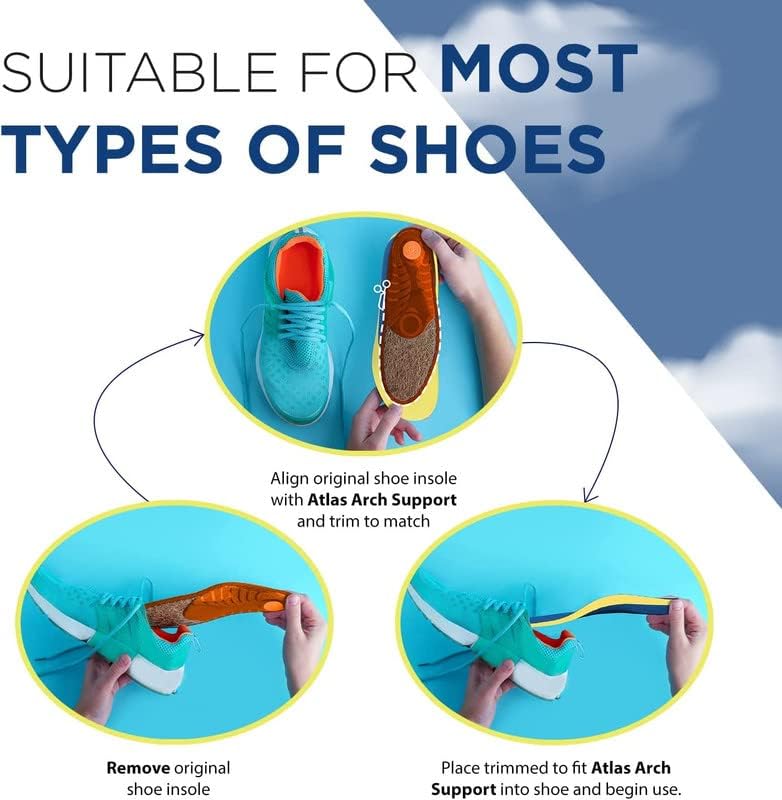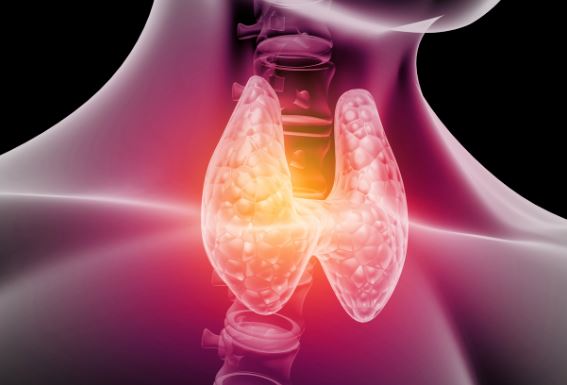
Table of Contents
Introduction
If you’re grappling with a foot ailment where your arches remain elevated under pressure, you might be dealing with hollow feet, clinically known as pes cavus. This condition not only impacts the structural integrity of your feet but can also give rise to a myriad of symptoms and complications, affecting your daily life. This comprehensive article delves into the underlying causes of hollow feet, signs of hollow feet, the challenges individuals with this condition face, and effective strategies for managing and improving foot health.

Unraveling the Mystery of Hollow Feet

1. Genetic Factors
Inherited Traits: Pes cavus often has a familial link, with research indicating a significant genetic component. Your parents or grandparents may influence the unique shape of your feet, particularly the height of your arches.
Connective Tissue Disorders: Certain individuals experience hollow feet due to connective tissue disorders. Weakness in the ligaments, tendons, and muscles can result in elevated arches, shaping the feet in a distinct way.
2. Neurological Conditions
Charcot-Marie-Tooth Disease: This hereditary neurological disorder is notorious for causing hollow feet. By affecting the nerves controlling muscles in the feet and lower limbs, it leads to muscular weakness and deterioration, contributing to the formation of raised arches.
Cerebral Palsy: Individuals with cerebral palsy may develop hollow feet due to impaired muscle function resulting from the condition. This altered muscle control can manifest as a higher arch in the feet.
3. Muscular Imbalances
Imbalances in the muscles of the feet, whether they are too weak or too tight, can significantly impact foot structure. Understanding these imbalances is crucial for addressing the issues associated with hollow feet.
Imbalances in Foot Muscles: Weak or tight muscles in the feet can result in exceptionally high arches, causing the central section of the feet to curve inward. Correcting the stance is vital for optimal foot function.
Gastrocnemius Equinus: Tight calf muscles, known as Gastrocnemius Equinus, can alter the appearance of the feet, making the arches look more pronounced. The upward pull from tight calf muscles contributes to the distinct arch shape.
4. Other Contributing Factors
Foot Trauma: Injuries such as broken bones or twisted ankles can alter the shape of the foot, particularly the middle part. This can lead to a deviation from the normal arch structure.
Ill-Fitting Footwear: Wearing shoes that lack proper support can result in pes cavus, causing discomfort and structural changes in the arch. Choosing the right shoes is essential for maintaining foot health.
Medical Conditions: Certain illnesses, such as polio and stroke, can weaken muscles and lead to pes cavus. When the muscles don’t work properly, the feet can take on an unusual arch shape.
Identifying Hollow Feet: Signs and Symptoms

Recognizing whether you have hollow feet involves paying attention to specific indicators:
Pain: Persistent discomfort, especially in the heel and ball of the foot, serves as a key indicator of hollow feet. This discomfort arises from the excessive pressure exerted on specific areas due to the elevated arch. Recognizing and addressing this pain early on can significantly contribute to overall foot health.
Visible Gap: A clear and unmistakable sign of hollow feet is the visible gap between the front of the foot and the heel when standing upright. This gap is a direct result of the heightened arch, which alters the weight distribution across the foot. Understanding this visual cue is essential for prompt identification and subsequent management.
Balance Issues: Limited contact points with the ground due to high arches can pose challenges to maintaining balance. Individuals with hollow feet may experience difficulties in stabilizing themselves, increasing the risk of falls and foot fatigue. Recognizing and addressing these balance issues is pivotal in preventing potential injuries.
Ankle Instability: Raised arches associated with hollow feet can impact ankle joint alignment, rendering it more susceptible to instability and injuries such as frequent ankle sprains. Understanding the correlation between arch height and ankle stability is crucial for individuals with hollow feet to take proactive measures in preventing potential issues.
Toe Deformities: Hollow feet may lead to uncontrolled bending and contracting of toes, resulting in a distinct appearance. Toe deformities are a visible consequence of the altered biomechanics associated with high arches. Recognizing these deformities early on allows for timely intervention to mitigate aesthetic and functional consequences.
How Hollow Feet Affect Daily Existence
Understanding the impact of hollow feet on daily life is vital for seeking appropriate treatment:
Various Effects on Your Body
Imbalanced Weight Distribution:
Issue: Hollow feet can lead to imbalanced weight distribution, exerting excessive pressure on various joints.
Consequence: This imbalance often results in discomfort and agony, affecting different parts of your body.
Restricted Foot Motion:
Issue: The unique arch shape of hollow feet limits the natural range of motion.
Consequence: Engaging in activities requiring flexibility, such as dancing or certain sports, becomes challenging.
Structural Deformities:
Issue: In severe cases, hollow feet can contribute to the development of structural deformities like bunions or calluses.
Consequence: These deformities may further impede comfortable movement and lead to additional foot-related issues.
Increased Risk of Accidents
Instability Due to Abnormal Foot Shape:
Issue: The abnormal shape of hollow feet can compromise stability.
Consequence: This poses a serious risk to your safety, increasing the likelihood of accidents and falls.
Fear of Falling:
Issue: Instability may lead to a persistent fear of falling.
Consequence: Reduced mobility and constant anxiety can hinder your ability to navigate daily life with confidence.
Persistent Foot Pain
Arch Pain During Movement:
Issue: The raised arches in hollow feet can result in persistent foot pain.
Consequence: Every step becomes a struggle, impacting your daily activities and overall mobility.
Impact on Knees:
Issue: Foot pain can radiate upwards, affecting the knees.
Consequence: Knee pain, tenderness, and swelling further contribute to discomfort and may limit your daily activities.
Diagnosis For Hollow Feet

Medical History
A qualified healthcare professional conducts a comprehensive evaluation, considering your symptoms and family history of foot conditions. Understanding familial predispositions is crucial, as foot problems may have a hereditary component, influencing your likelihood of experiencing similar issues. Additionally, any previous foot injuries or experiences contribute to a holistic understanding of your foot health.
Physical Examination
Thorough physical examination involves assessing arch height, muscle strength, flexibility, gait abnormalities, and posture. This step provides crucial insights into the biomechanics of your feet, aiding in accurate diagnosis and subsequent treatment planning.
Imaging Tests
Advanced imaging techniques, including X-rays, MRI, CT scans, and Electromyography (EMG), are employed to assess bone alignment, soft tissue structures, and nerve damage. These tests contribute to a comprehensive understanding of the structural aspects of hollow feet, guiding the formulation of an effective treatment strategy.
Treatment Options For Hollow Feet
Orthotic Devices
Specially designed shoe inserts, known as orthotics, offer crucial support to the arch and improve foot alignment. Custom orthotics, in particular, provide benefits such as enhanced stability during walking and standing, pain reduction, prevention of further deformities, and improved athletic performance.
Physical Therapy
Supervised exercises by a physical therapist aim to strengthen foot muscles and improve overall function. This therapeutic approach addresses muscle imbalances, enhances stability, increases flexibility, and prevents the development of chronic conditions associated with hollow feet.
Medications
The use of medications plays a significant role in managing symptoms, ranging from over-the-counter pain relievers for mild discomfort to prescription medications addressing nerve pain or inflammation. These medications enhance physical and mental functions, enabling individuals to actively engage in daily activities.
Surgery
In severe cases where conservative treatments prove ineffective, surgical intervention may be considered. Surgical procedures aim to correct foot deformities, release tight structures, and improve overall foot function.
Bracing
Bracing, including the use of ankle-foot orthosis (AFO), may be recommended to provide additional support to the foot and ankle, especially in cases where other interventions have not yielded desired outcomes.
Lifestyle Modifications
Incorporating lifestyle changes can significantly contribute to managing hollow feet:
Proper Footwear: Choosing well-fitting shoes with good support and cushioning is essential for comfort and balance. Avoiding high heels or constricting footwear is advisable.
Foot Care: Regularly checking for problems like blisters, calluses, or sores, keeping feet clean, and using moisturizer helps maintain optimal foot health.
Avoiding High-Impact Activities: Engaging in low-impact exercises, such as swimming or cycling, minimizes stress on the feet and reduces the risk of injuries.
Regular Foot Exercises: Performing regular stretching exercises, including toe curls, arch lifts, and heel walking, contributes to foot flexibility and overall health.
Maintaining a Healthy Weight: Achieving and maintaining a healthy weight reduces excess stress on the feet, promoting overall well-being.
FAQ Section
Q1: Can hollow feet be treated?
Yes, various treatments, including orthotic inserts, physical therapy, and proper footwear, can help manage hollow feet and alleviate associated symptoms.
Q2: Can hollow feet be inherited?
Yes, genetics play a significant role in the development of high arches, with the condition often running in families.
Q3: Can hollow feet affect activities like sports?
Yes, individuals with hollow feet may experience difficulty in activities that require balance and flexibility, such as walking on uneven surfaces or participating in sports.
Q4: Can wearing the right shoes help with hollow feet?
Absolutely. Choosing footwear with proper arch support and a good fit is crucial for managing hollow feet and preventing further complications.
Q5: Is surgery necessary for hollow feet?
Surgery is considered in severe cases where conservative treatments have not been effective. It aims to correct deformities and improve overall foot function.
Q6: How can lifestyle modifications help manage hollow feet?
Lifestyle changes, including proper footwear, foot care, low-impact activities, regular foot exercises, and maintaining a healthy weight, contribute to better foot health and overall well-being.
Q7: What are the benefits of custom orthotics?
Custom orthotics offer enhanced stability, pain reduction, prevention of further deformities, and improved athletic performance by providing tailored support to the arch.
WHERE TO BUY
Conclusion
Living with hollow feet presents numerous challenges, from persistent pain to difficulty in finding proper footwear. However, by understanding the reasons behind this condition and seeking appropriate support, individuals can overcome these challenges and lead a better, more comfortable life. Whether through non-surgical interventions, proper footwear choices, or surgical options in severe cases, addressing hollow feet is crucial for optimal foot health and an improved quality of life.










Thank you for your sharing. I am worried that I lack creative ideas. It is your article that makes me full of hope. Thank you. But, I have a question, can you help me?